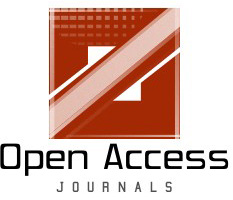Download Cover Page
IJRSS_May_2020......
PARTICULAR
|
Page No.
|
 A STUDY TO ASSESS THE KNOWLEDGE AND PRACTICES REGARDING PREVENTION OF ROAD TRAFFIC ACCIDENTS AMONG ADOLESCENTS OF KASAN VILLAGE, HARYANA
A STUDY TO ASSESS THE KNOWLEDGE AND PRACTICES REGARDING PREVENTION OF ROAD TRAFFIC ACCIDENTS AMONG ADOLESCENTS OF KASAN VILLAGE, HARYANA
Mrs. Swapna M K, Ms. Sharmila
Abstract:
In 2015, there were about five lakh road accidents in India, which killed about 1.5 lakh people and injured about five lakh people. India, as a signatory to the Brasilia declaration, intends to reduce road accidents and traffic fatalities by 50% by 2022. It seeks to address issues related to road accidents, third party insurance and road safety measures. The World Health Organization has noted that road accidents are a major public health problem as crashes kill more than 1.25 million people and injure about 50 million people a year, with 90% of such casualties occurring in developing countries.One serious road accident in the country occurs every minute and 16 die on Indian roads every hour. About 1214 road crashes occur every day in India. Two wheelers account for 25% of total road crash deaths. About 20 children under the age of 14 die every day due to road crashes in in the country. By keeping this in view, the present study is to assess the knowledgeand practices regarding Prevention of Road Traffic Accidents among Adolescents of Kasan village, Haryana. A cross sectional descriptive study was carried out among adolescents,a purposive sampling technique was adopted to select 100 samples. The questionnaire regarding knowledge and prevention on prevention of Road traffic Accidents was used to collect the data. The sample size of present study was 100 and sampling technique used was nonprobability purposive sampling. The result reveals that the knowledge level was high compared to the practice level,but need more such awareness programmes about prevention of road traffic accidents is necessary for adolescence to reduce the road accidents
Download full Length
Paper......
|
1-7
|
 Analyzing the Development of the Chishti Silsilah in Delhi: A Case Analysis of the Role Played by Shaikh Nizamuddin Auliya
Analyzing the Development of the Chishti Silsilah in Delhi: A Case Analysis of the Role Played by Shaikh Nizamuddin Auliya
Dr. Chandni Sengupta
Abstract:
In the early medieval period, Delhi emerged as the nerve-centre of Islam. With the establishment of the Delhi Sultanate, the city came to be regarded as a safe haven for not only the rulers and the nobility but also the scholars and men of piety. Gradually, Delhi became a focal point of Sufism. The most prominent silsilah in Delhi was the Chishti silsilah and the most popular Sufi saint was Shaikh Nizamuddin Auliya. This paper aims to analyze the rise and development of the Chishti silsilah and the role played by Shaikh Nizamuddin Auliya in popularizing Sufism in the city.
Download full Length
Paper......
|
8-15
|
 The Social problems of pre-wedding divorced women in Ajloun Governorate A field study from the viewpoint of divorced women
The Social problems of pre-wedding divorced women in Ajloun Governorate A field study from the viewpoint of divorced women
Dr. Safwat mahmoud Al rousan, Dr. Rami Abed Al HameedAljbour
Abstract:
The study aimed to identify the causes of divorce and the most prominent social problems facing pre-wedding divorcees in Ajloun Governorate, the study sample consisted of (43) divorced women who were targeted through the method of social survey, and the questionnaire was used as a tool for the study, and the results showed that the main reasons for pre-wedding divorce are r: social, economic, personal and by percentage (56%), (34%), (20%), respectively, The most prominent problems experienced by divorced women before the wedding are (exposure to verbal violence, observation by people, and a sense of despair and the future is unknown) with arithmetic circles (3.60), (3.52) and (3.47) respectively, as the results showed that there are differences Statistical significance in the responses of the study sample individuals towards the social problems experienced by divorced women according to the variable of work and for the benefit of working women, and the absence of statistically significant differences according to the variables (age, educational status, place of residence, courtship period).
Download full Length
Paper......
|
16-29
|
 The Proportional development of Co-operative banking between Raigad and Ahmednagar District in Maharashtra
The Proportional development of Co-operative banking between Raigad and Ahmednagar District in Maharashtra
Dr.Jagannath Kisan Khemnar
Abstract:
The State of Maharashtra is very progressive across the country in sense of Gross Domestic Product, urbanization, capital movement, speedily developed infrastructure, and so many things. There are many things which behind it. There could be political will, development banking as well as co-operative banking, role of agriculture and non-agriculture universities, good policies of Government, education, health-facilities and desire of society also. However, this paper is showing that apart from above mentioned factors, co-operative banking is crucial to state to achieving highest speed of growth and developments.
Download full Length
Paper......
|
30-44
|
 INSTITUTIONAL CLIMATE AND TEACHER EDUCATORS’ MORAL IN THE PRIVATE TEACHERS’ TRAINING INSTITUTES OF KOLKATA
INSTITUTIONAL CLIMATE AND TEACHER EDUCATORS’ MORAL IN THE PRIVATE TEACHERS’ TRAINING INSTITUTES OF KOLKATA
Dr. Poulami Jana
Abstract:
This research work studied the level of professional commitment of teacher educators serving in secondary teacher training institutions of Kolkata, West Bengal. The data were gathered through „institutional climate inventory‟ and „Teachers‟ morale rating Scale of Teacher Educators‟ from 80 teacher educators of 10 B. Ed. colleges of Kolkata. Results showed that the level of Teachers‟ morale of B. Ed. teacher educators in Kolkata is highly correlated with the institutional climate perception of them. Significant differences were found in teachers‟ morale of B. Ed. teacher educators with regard to Subject discipline and teaching experience. However, male and female teacher educators were found to have similar level of teachers‟ morale towards the institutional perception. The study discusses certain suggestions for enhancing the teachers‟ morale level of B. Ed. teacher educators.
Download full Length
Paper......
|
45-55
|
 Health Care Sector in Kashmir Division J&K State (India): an overview
Health Care Sector in Kashmir Division J&K State (India): an overview
Sumeet Pal Singh Bali, Dr. Syed Javed Iqbal Kamili
Abstract:
"Health is wealth". Wealth of the any Nation depends upon the health of its citizens. In the light of this most of the developed countries in the world have more focus on health of their citizens and a larger portion of the budget in developed countries is kept for healthcare sector. The provision of medical care varies across countries and the nature of such Provisioning is determined by the socio-economic and political forces in a given society. Although there is great variety in provisioning, broadly there are three major types. First, there are countries where the state plays a central role in the finance, provision and administration of services but at the same time private interests in the form of individual practice, hospitals and other supportive services coexist. Second, there are countries where the state is the sole provider of medical care and no private interests are allowed. Third, there are countries which rely largely on the market for the provisioning of services. In the aftermath of the Second World War the general consensus in Europe as well as in the newly independent states of Africa and Asia was in favour of a planned economic development. In developing countries on the other hand, the degree to which the state has been involved in the provision of health services has varied somewhat, but the support for universal coverage has been high on the popular agenda. This is related to the fact that in some countries of south Asia (Sri Lanka and India) the initial years of independence witnessed health services taking a large share of planned outlays for investment in development.
Download full Length
Paper......
|
56-64
|
 Performance and Problems of Public Healthcare Providers in Mizoram
Performance and Problems of Public Healthcare Providers in Mizoram
Lalhriatpuii, Lalrinkima
Abstract:
Health economics has not been extensively studied at research level in Mizoram. As such, there have been only few studies regarding the provision of health facilities and its impact on the economy. As Mizoram is one of the smallest states rampant with critical illness such as cancer, cardiovascular disease and other lifestyle related diseases such as diabetes and hypertension. Besides the social cost, a study of the economic cost of provision of health and healthcare facilities is one of the most important and much needed studies in economic literature. This paper primarily aims at assessing delivery of health and healthcare facilities to patients in a public hospital. The study finds that public healthcare provision in Mizoram is a quintessential paradigm for the provision of free and basic universal healthcare services the society
Download full Length
Paper......
|
65-69
|
 ROLE OF GOVERNMENT IN FORMULATION OF POLICIES AND PROGRAMMES TO PROMOTE MSMEs/ENTREPRENEURSHIP IN INDIA
ROLE OF GOVERNMENT IN FORMULATION OF POLICIES AND PROGRAMMES TO PROMOTE MSMEs/ENTREPRENEURSHIP IN INDIA
Dr. S. Kishore, Dr. S. Dilli
Abstract:
The present article deals with the various development initiatives, policies, and programmes taken by the Government of India and Andhra Pradesh State Government to promote entrepreneurial development. Andhra Pradesh embarked upon a mission, which was, to be at the forefront of industrial development in the country by the year 2020. But fulfilling this Mission needs not only ideas and dreams but also a lot of hard work and realistic planning guided by well spelt out policy directions. To accomplish the objective of promoting entrepreneurial awareness and development among existing entrepreneurs as well as the upcoming entrepreneurs, the secondary data has been collected from the records and the published reports of the District Industries Centre (DIC), Chief Planning Officer, Chittoor, Commissioner of Industries (A.P.,), Andhra Pradesh Industrial & Technical Consultancy Organisation (APITCO), and Ministry of Industries, New Delhi. Apart from these, interviews were conducted with experts on the subject
Download full Length
Paper......
|
70-80
|
 DEVELOPMENTAL PROGRAMMES & ITS IMPACT ON ECONOMIC STATUS OF SCHEDULED/SCHEDULEDTRIBE COMMUNITY IN INDIA
DEVELOPMENTAL PROGRAMMES & ITS IMPACT ON ECONOMIC STATUS OF SCHEDULED/SCHEDULEDTRIBE COMMUNITY IN INDIA
DR. N. THYAGARAJU
Abstract:
Most of the areas inhabited by the SC/ST Communities are remote and underdeveloped. The SC/ST Communities live mostly in isolated villages or hamlets. A smaller portion of their population has now settled in permanent villages as well as in towns and cities. There are innumerable constraints responsible for lower pace of these communities development process than desired. These communities have been given numerous rights and concessions under various statutes of central as well as State Governments but they remain deprived of the benefits arising out of such statutory provisions due to their ignorance and apathy of enforcing agencies. There exists lack of awareness among tribal population about various developmental programs launched by Government of India and States, resulting in their exploitation. In spite of the efforts made by the Government, the benefits are not reaching to the really needy poor people. The basic problem is not of the scarcity of resources but that of mismanagement. The multiplicity of the agencies which are carrying out these programs has compounded the problem. Many times they are not able to co- ordinate their efforts or fail to follow up the programs over a longer duration. Against this backdrop, the present study reviews the impact of various developmental programs of the Central and the State Governments on overall development of SC/ST Communities.
Download full Length
Paper......
|
81-93
|
 An Economic Analysis of Literacy Status of Identified Tribal Areas of India
An Economic Analysis of Literacy Status of Identified Tribal Areas of India
Dr. H. B. Gupta, Mr. Abhishek Pratap Singh Sachan
Abstract:
The population of Scheduled Tribes (STs) in the country, as per census 2011 is 10.45 crore. STs constitute 8.6 per cent of the country's total population and 11.3 per cent of the total rural population. Tribal communities are in a scattered manner over India. All tribal are having their characteristic features and their issues, with varied culture and lifestyle. Government is continuously trying to do some changes and development for the better education, health and lifestyle to grow them at the same pace as other places do. Several steps have been taken by the central and state government to promote the citizens of a tribal region in all aspects through constitutional provisions with the various schemes. The major issue in those regions is Naxalism, because of which developmental plans and policies will get hindered. This problem needs to be illustrated in detail with causes, effects and solutions. As a result, those tribal communities will create their identity by their own and resist for survival. The only solution to grow those community is to promote and motivate them for education, because states namely, Tamil Nadu, Odisha, Madhya Pradesh, West Bengal and Kerala have shown gap of more than 18 percentage points in literacy rate of STs as compared to the total population during 2011. Through this research paper, authors would like to highlight the problems, challenges and importance of education in the tribal region to grow them economically.
Download full Length
Paper......
|
94-99
|
 ANALYSIS OF PERFORMANCE INDICATORS AT MOTOR TRANSPORTATION COMPANIES
ANALYSIS OF PERFORMANCE INDICATORS AT MOTOR TRANSPORTATION COMPANIES
Ergashev Sherzod Tashpulatovich
Abstract:
This article is devoted to the consideration of the essential indicators of the efficiency of motor vehicle companies and their impact on the company’s sustainability, as well as the aspects significant for making management decisions. In addition, the article illustrates the proposals and recommendations aimed at improving the system of economic indicators.
Download full Length
Paper......
|
100-107
|
 INFORMAL EMPLOYMENT AND INCOME TAXATION IN UZBEKISTAN
INFORMAL EMPLOYMENT AND INCOME TAXATION IN UZBEKISTAN
Niyazmetov Islambek Masharipovich, Ergashev Rustam Rajabovich
Abstract:
This article is devoted to the consideration of issues of the informal employment and the level of imposing taxes on the population’s income in the economy of Uzbekistan in terms that quite a big part of the employed population is not taxed. In addition, the article reveals basic problems related to the taxation of income and their social consequences. In reliance upon these statements, the article represents the ways to reduce informal employment in Uzbekistan through improving the system of the income taxation.
Download full Length
Paper......
|
108-118
|
 An Overview of the Lifestyle Patterns and Cancer in India
An Overview of the Lifestyle Patterns and Cancer in India
Akhter Hussain Bhat
Abstract:
Cancer is the second leading cause of death worldwide. About 1 in 6 deaths is due to cancer. Cancer is caused by the tendencies and the triggers. Tendencies refer to hereditary or genetic factors while the triggers can arise from the environment, from one’s lifestyle or from some virus. The lifestyle factors include smoking, improper diet, alcohol, infections, physical inactivity and so on. According to the Cancer Foundation of India (CFI), Kolkata, 60-70 per cent cancer cases in India are lifestyle oriented. This paper is an analytical and descriptive one. It seeks to describe the role of lifestyle patterns in the causation of cancer in India. The work is based on secondary data.The findings indicate that of all cancer related deaths, almost 25-30% is due to tobacco, 30-35% is linked to diet, about 15-20% is due to infections and the remaining percentage is due to other factors.In India more than 1 million new cases of cancer are diagnosed every year. Although some authors argue that the risk factors in the causation of cancer in India are almost same as in other parts of the world, the specific socioeconomic patterns and bio-cultural factors necessitate exploring other causation trajectories. Research reveals that unhealthy diet, tobacco use, alcohol and drug consumption, low physical activity are responsible for 8, 4.8, 2.5, 0.8 per cent cancer causation in India respectively.Unhealthy lifestyles make a significant contribution to ill health and mortality. Increased public awareness of the links between lifestyles and cancer is the need of the hour as it might help people understand the health consequences of their actions and encourage them to make much needed lifestyle changes.
Download full Length
Paper......
|
119-131
|
 Evaluation of Sustainable Livelihood Assets in Pre- and Post- Disaster Context: A Case Study of Dal Lake, Srinagar
Evaluation of Sustainable Livelihood Assets in Pre- and Post- Disaster Context: A Case Study of Dal Lake, Srinagar
Iftikhar Shah, Priya Sharma
Abstract:
The issue of achieving sustainable livelihoods (SL) is a constant problem that has gained significant interest for all countries. Livelihood of people comprises five core types of assest base namely human, social, natural, physical and financial assest. Even though contexts of vulnerability and coping from shocks has been highlighted to be critical to SL, which particularly in context of disasters is seen to be ignored. This study aims to make a comparison between the pre- and post- floods (2014) situation based on various SL components and understanding the coping mechanisms adopted by these communities to diversify their livelihood after the floods. A Capacities and Vulnerability Analysis (CVA) was also crried out in order to support the effort of people to achieve socio-economic development post the floods in Dal lake. The essence of enquiry revealed through specific research questions like how changes in different livelihood assets are measured in various pockets, how relevant indicators and variables are related to different types of assets for livelihood assets, what is the refection of livelihood assets pentagon, how should livelihood assets be improved in the future in terms of the information for comparing the pre and post disaster situations? The present study prompts us to a conclusion that the assets changes significantly from one spatial scale to other across the lake with the change associated with different results and features. But all these attributes instinctively showed that there has been a major lacuna in the government management systems which failed to support the Dal dwelling communities post the floods of 2014.
Download full Length
Paper......
|
132-142
|
 Society, Knowledge and Space in India during 19th and 20th Century: A Historical Analysis of Gulamgiri, Kisan Ka Koda, Karma Yoga and Annihilation of Caste
Society, Knowledge and Space in India during 19th and 20th Century: A Historical Analysis of Gulamgiri, Kisan Ka Koda, Karma Yoga and Annihilation of Caste
Dr. Surendra Kumar, Dr. Lata
Abstract:
This paper aims to explore dynamics of society, knowledge and space in India during 19th and 20th century with reference to four texts –Gulamgiri, Kisan ka Koda, Karma Yoga, and Annihilation of Caste. The text Gulamgiri, Kisan Ka Koda and Karma Yoga represent views of Mahatma Phule and Swami Vivekananda about human beings, social formation and participation in public space. Similarly, the text Annihilation of Caste reflects views of Dr. Ambedkar on caste system; this text also provides a very rare insight about construction of knowledge and space in 20th century through dialogue, convergence and difference of opinion among Jat-Pat-Todak Mandal( Arya Samaj), Dr. Ambedkar and Mahatma Gandhi. Further, it deals with the issue of social formation, knowledge and space into the mainstream of 20th century. The methodology of the paper is to examine texts written by intellectuals from different segments (both with reference to social as well as occupational) in 19th and 20th century. The texts Gulamgiri(1873), Kisan ka Koda(1883) , Karma Yoga( 1896) were written in the 19th century and Annihilation of Caste(1936) was written in the 20th century.
Download full Length
Paper......
|
143-158
|
 THE MACROECONOMIC DETERMINANTS OF ECONOMIC GROWTH IN ETHIOPIA: AN ARDL APPROACH
THE MACROECONOMIC DETERMINANTS OF ECONOMIC GROWTH IN ETHIOPIA: AN ARDL APPROACH
Amare Berhanu Altaseb, Kamaljit Singh
Abstract:
The main purpose of this paper has been to examine the effects of some of the
key macroeconomic variables on Ethiopia’s economic growth. Unit roots first tested to
determine the stationarity status of the variables using the Augmented Dickey-Fuller
(ADF) and Phillips Peron (PP) tests and further investigated for Co-integration using the
Autoregressive Distributed Lag Models (ARDL) based on timeseries data over the period
1974 to 2017. The study result revealed that gross domestic investment to be an important
prerequisite for accelerating growth. Similarly, increasing human capital would help to
contribute to growth. The empirical results also suggest that official development
assistance promotes economic growth. Alternatively, the external debt and inflation are
negatively related to country’s economic growth. From the findings, it is recommended
that relevant policies should be formulated to ensure that each of this factors move in a
direction such that they enhance economic growth.
Download full Length
Paper......
|
159-184
|
 India’s Foreign Policy towards the Gulf Cooperation Council
India’s Foreign Policy towards the Gulf Cooperation Council
Dr. Mahfooz Alam
Abstract:
India’s relations with Gulf countries and West Asia are very old. The West Asian region plays a
significant role in India’s economy, as it provides about two thirds of India’s total oil import. For long times,
millions of Indian migrants have been move to search jobs in the GCC countries and they are considered as a
significant part of the total remittance received from out of the country. On the other hand, Indian always
maintains a balancing political strategy with the GCC countries. The emerging security, regional and
international order in the region demands increased interaction between India and the GCC. As the GCC also
opening up, this paper argues that it time for India to look beyond trade and business, and engage the GCC in
political, security and strategic fields
Download full Length
Paper......
|
185-191
|
 India’s Foreign Policy towards the Gulf Cooperation Council
India’s Foreign Policy towards the Gulf Cooperation Council
Dr. Mahfooz Alam
Abstract:
India’s relations with Gulf countries and West Asia are very old. The West Asian region plays a
significant role in India’s economy, as it provides about two thirds of India’s total oil import. For long times,
millions of Indian migrants have been move to search jobs in the GCC countries and they are considered as a
significant part of the total remittance received from out of the country. On the other hand, Indian always
maintains a balancing political strategy with the GCC countries. The emerging security, regional and
international order in the region demands increased interaction between India and the GCC. As the GCC also
opening up, this paper argues that it time for India to look beyond trade and business, and engage the GCC in
political, security and strategic fields
Download full Length
Paper......
|
185-191
|
 India’s Foreign Policy towards the Gulf Cooperation Council
India’s Foreign Policy towards the Gulf Cooperation Council
Dr. Mahfooz Alam
Abstract:
India’s relations with Gulf countries and West Asia are very old. The West Asian region plays a
significant role in India’s economy, as it provides about two thirds of India’s total oil import. For long times,
millions of Indian migrants have been move to search jobs in the GCC countries and they are considered as a
significant part of the total remittance received from out of the country. On the other hand, Indian always
maintains a balancing political strategy with the GCC countries. The emerging security, regional and
international order in the region demands increased interaction between India and the GCC. As the GCC also
opening up, this paper argues that it time for India to look beyond trade and business, and engage the GCC in
political, security and strategic fields
Download full Length
Paper......
|
185-191
|
 WOMEN'S REPRESENTATION AND AUTONOMY
WOMEN'S REPRESENTATION AND AUTONOMY
DR. POOJA KUMARI
Abstract:
Representation in both the senses of the word - i.e., culturally as a
construct shaping, and conditioned by, social historical cognitive modes and
politically as a standing for and protecting the interests of a constituency
is central to and discussion of leadership. My discussion of the modes
of subjectification of the female leader was intended to mark the strategies
of representation that c ertain texts of the culture r e s o r t t o i n t h e i r
a t t e m p t t o r e c o n c i l e f e m a l e n e s s a n d authority
Download full Length
Paper......
|
192-201
|
 Global Cooling: The little Ice Age
Global Cooling: The little Ice Age
Sujeet Prasad
Abstract:
It was predicted that global warming would result from the increased atmospheric
CO2 levels. But over the last 15 years the atmospheric CO2 levels have continued to
increase at a rapid pace but the world experienced a cooling trend of -0.12 degree Celsius
per century in contrast to the rise of +1.18 degree Celsius pace.
Download full Length
Paper......
|
202-207
|
 Pattern of Rainfall Distribution in Champaran West : A Geographical Study
Pattern of Rainfall Distribution in Champaran West : A Geographical Study
Dr. Bablu Kumar
Abstract:
Biting cold, sultry summer, heavy downpour for the short period, longer
spell of dryness, spectre old waves and prevalence of loo are the characteristic features of
monsoonal climate. For a state like Bihar where prosperity is wedded to agriculture and
similarly agriculture is wedded to rain fall. Keeping these peculiarities in mind study of the
pattern of rainfall distribution is essential in the context of Bihar in general and west
Champaran district in particular.
Download full Length
Paper......
|
208-220
|
 “IMPACT OF DEMOGRAPHIC VARIABLE ON COLLEGE CLIMATE OF
TEACHERS WORKING IN HIGHER EDUCATION DEPARTMENT”
“IMPACT OF DEMOGRAPHIC VARIABLE ON COLLEGE CLIMATE OF
TEACHERS WORKING IN HIGHER EDUCATION DEPARTMENT”
Dr. Kajal Devi Manhas, Neetu Raina
Abstract:
The aim of present paper was to explore the Factors and Impact of Demographic Variable
on College Climate of Teachers working in Higher Education Department.
Methodology and Selection of Sample: To collect the data regarding College Climate Dr.
A.K. Gaur College Climate Questionnaire was used. 40 Teachers of Govt. Degree College
Samba was selected for the study.
Download full Length
Paper......
|
221-226
|
 CHALLENGE FACED BY COLLEGE PRINCIPAL IN TRIBAL AREA
CHALLENGE FACED BY COLLEGE PRINCIPAL IN TRIBAL AREA
Anand Bhandare
Abstract:
There are tribal groups in the entire nation. They live mainly in mountainous and hilly areas. For the sustainability of their living conditions, they are reliant on natural environmental conditions.
Download full Length
Paper......
|
227-236
|
 ANALYSIS OF CHALLENGES IMPLEMENTING THE CITIZENSHIP AMENDMENT ACT 2019 IN INDIA
ANALYSIS OF CHALLENGES IMPLEMENTING THE CITIZENSHIP AMENDMENT ACT 2019 IN INDIA
Priya Bharati Sharma
|
237-244
|
 Market Segmentation, Targeting, Positioning strategy and its impact on Business
Market Segmentation, Targeting, Positioning strategy and its impact on Business
Monika
Abstract:
Every time, businesses donot satisfytheir customers needs. It is difficult for every businessman to satisfy each and every need of individual customer.
Download full Length
Paper......
|
245-250
|
 The Impact of the Pandemic on Social life in India
Through the Ages
The Impact of the Pandemic on Social life in India
Through the Ages
Dr Humera Nuzhat
Abstract:
India has encountered several pandemics throughout history. This review article talks
about such outbreaks known to have occurred in the history and are arranged in accordance
to chronology
Download full Length
Paper......
|
251-257
|
 Paper in hindi
Paper in hindi
|
258-270
|
 Paper in hindi
Paper in hindi
Bharti Kumari
|
281-284
|
 Paper in hindi
Paper in hindi
डॉ राजेन्द्र गंगाधरराव मालोकर
|
285-290
|
 IMPACT OF WATER POLLUTION ON THE AQUATIC
ORGANISMS
IMPACT OF WATER POLLUTION ON THE AQUATIC
ORGANISMS
Dr. Asha Saxena
|
291-299
|
 An Empirical Assessment of Freedom of Contract
An Empirical Assessment of Freedom of Contract
Dr Hemlata Meena
|
300-305
|
 संथाल विद्रोह: स्वतंत्रता का प्रथम संग्राम
संथाल विद्रोह: स्वतंत्रता का प्रथम संग्राम
डॉ. अभय कुमार सिंह
|
306-311
|
 नवउदारवाद के चालीस वर्ष: बुद्धिजीवी एवं नीति निर्माताओं के लिए सबक
नवउदारवाद के चालीस वर्ष: बुद्धिजीवी एवं नीति निर्माताओं के लिए सबक
डॉ. रमेश चंद बैरवा
|
312-317
|




 Call for Papers
Call for Papers












